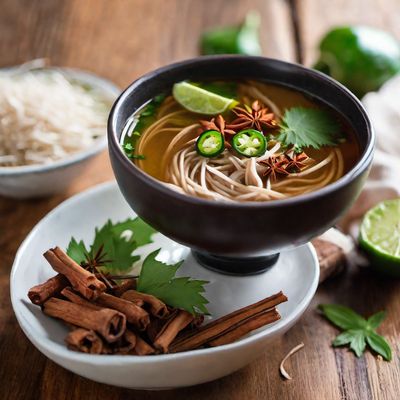
Ingredient
Mints, dry
The Versatile Herb: Unlocking the Aromatic Power of Dry Mints
Dry mints are small, dried leaves with a vibrant green color and a strong, minty aroma. They have a slightly crumbly texture and can be crushed or ground to release their essential oils. Dry mints offer a cool and refreshing taste with a hint of sweetness and a subtle earthy undertone. They are commonly used as a garnish, seasoning, or infusion in various cuisines around the world.
Origins and history
Mint has a long history dating back to ancient times. It was highly valued by the ancient Greeks and Romans for its medicinal properties and was used to freshen breath, aid digestion, and soothe headaches. Mint leaves were also used as a symbol of hospitality in many cultures. Today, dry mints are cultivated in different parts of the world, including the Mediterranean region, North America, and Asia.
Nutritional information
Dry mints are low in calories and contain small amounts of essential nutrients such as vitamin A, vitamin C, and calcium. They are also known for their antioxidant and anti-inflammatory properties. A teaspoon of dried mint leaves provides approximately 5 calories and negligible amounts of fat, protein, and carbohydrates.
Allergens
None
How to select
When selecting dry mints, look for leaves that are vibrant green in color and free from any signs of discoloration or mold. The leaves should be whole and intact, without any crumbling or crushing. Avoid purchasing dry mints that have a dull or faded appearance, as this may indicate loss of flavor and aroma.
Storage recommendations
To maintain the freshness and flavor of dry mints, store them in an airtight container in a cool, dark place away from direct sunlight. Avoid storing them near strong-smelling spices or ingredients, as they can absorb odors easily. Properly stored dry mints can retain their flavor for up to a year.
How to produce
Dry mints can be easily grown in a home garden or in pots. They thrive in well-drained soil and require ample sunlight. Mint plants can be propagated from seeds or cuttings. Regular pruning will help promote bushier growth and prevent the plant from becoming invasive. However, it is important to note that mint plants can spread rapidly, so it is advisable to grow them in containers to control their growth.
Preparation tips
Dry mints can be used in a variety of ways in the kitchen. They can be crushed or ground to make a flavorful seasoning or added to marinades, dressings, and sauces. Dry mints are commonly used to make herbal teas or infused into hot water for a refreshing beverage. They can also be used as a garnish for desserts, salads, or savory dishes. Additionally, dry mints can be incorporated into baked goods, such as cookies or cakes, to add a unique twist of flavor.
Substitutions
Spearmint leaves, peppermint leaves
Culinary uses
Dry mints are widely used in Middle Eastern, Mediterranean, and South Asian cuisines. They are commonly found in dishes such as tabbouleh, tzatziki, mint chutney, and Moroccan mint tea. Dry mints are also used in desserts like ice creams, chocolates, and mint juleps. They pair well with lamb, yogurt, citrus fruits, and chocolate.
Availability
Mint is cultivated in various regions around the world, including the Mediterranean, North America, and Asia. It is commonly available in grocery stores, supermarkets, and farmers markets.
More ingredients from this category » Browse all

Borage, dry
The Vibrant Herb of Delight

Rosemary, dry
"The Fragrant Herb: Unveiling the Secrets of Dried Rosemary"

Sweet cicely, dry
The Delicate Herb: Sweet Cicely

Hyssop, dry
The Aromatic Herb: Unveiling the Secrets of Dry Hyssop

Thyme, dry
The Essence of Thyme: A Versatile Herb

Rue, dry
The Bitter Herb: Unveiling the Secrets of Dry Rue

Wintergreen leaves, dry
Nature's Minty Delight

Fennel, dry
The Fragrant Spice of the Mediterranean

Basil, dry
The Fragrant Herb: Dried Basil

Tansy and related species, dry
The Golden Herb of Ancient Times

Angelica, dry
The Heavenly Herb: Unveiling the Secrets of Dry Angelica

Celery leaves, dry
The Flavorful Herb: Dry Celery Leaves
Recipes using Mints, dry

Bulgur Pilaf with Roasted Vegetables
Savory Delight: Roasted Vegetable Bulgur Pilaf

Vietnamese-style Laksa
Pho-inspired Laksa: A Fusion of Malaysian and Vietnamese Flavors

Kaleh Joosh - Iranian Yogurt Soup
Creamy Delight: Iranian Kaleh Joosh Soup

Caribbean-style Pho
Tropical Twist Pho: A Caribbean Delight with Vietnamese Roots